
Overview
This article delineates ten essential strategies for e-commerce conversion rate optimization (CRO), asserting the significance of a holistic approach that integrates user experience, data analytics, and targeted marketing initiatives. By implementing techniques such as:
- Competitor analysis
- Conversion copywriting
- A/B testing
businesses can markedly enhance their performance metrics and drive sales. Successful case studies underscore this assertion, showcasing substantial increases in engagement and conversion rates.
Introduction
In the dynamic realm of online shopping, businesses confront the ongoing challenge of converting casual browsers into dedicated customers. This article explores ten essential strategies for ecommerce conversion rate optimization, providing brands with a strategic roadmap to elevate their sales performance without incurring additional advertising costs. As competition escalates, a crucial question emerges: which of these strategies will be most effective in transforming user engagement into measurable sales growth?
Parah Group: Implement Holistic Conversion Rate Optimization Strategies
Parah Group asserts a holistic approach to ecommerce conversion rate optimisation, seamlessly integrating diverse strategies to elevate overall performance. This method synchronizes user experience, marketing messages, and , crafting a fluid journey for clients. By focusing on every aspect of client interaction, brands can uncover significant growth potential without incurring additional advertising costs. This all-encompassing strategy ensures that all elements work in unison to maximize ecommerce conversion rate optimisation and success rates, as well as average order values (AOV).
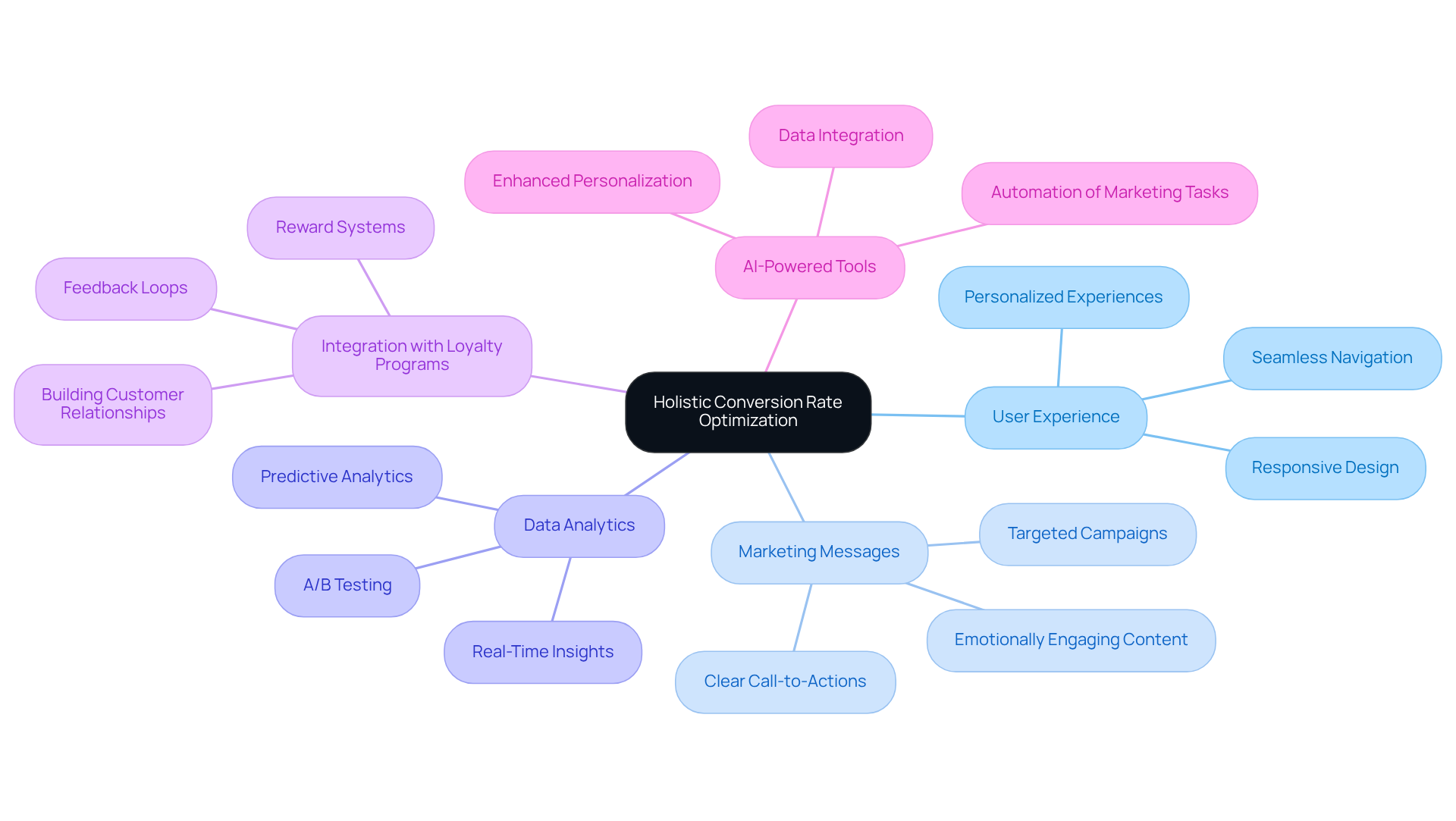
User Session Recordings: Analyze Customer Behavior for Insights
User session recordings stand as a formidable asset for analyzing customer behavior, which is essential for on e-commerce platforms. By meticulously monitoring user engagements, companies can uncover obstacles that impede transactions.
For instance, insights gleaned from session recordings can illuminate navigation challenges or issues with product visibility, empowering businesses to implement targeted enhancements. This data-driven approach not only simplifies navigation but also optimizes the overall user experience.
As a result, practical modifications derived from these recordings can yield substantial improvements in transformation metrics and elevate user satisfaction. Notably, companies like Costa Coffee have effectively harnessed session recordings to identify and address drop-off points during app registration, culminating in a remarkable 15% increase in registrations.
Such examples underscore the pivotal role of session recordings in ecommerce conversion rate optimisation by aligning website functionality with user needs.

Competitor Analysis: Benchmark Against Industry Leaders
Conducting a comprehensive competitor analysis is essential for companies aiming to benchmark their performance against industry leaders in ecommerce conversion rate optimisation. This process involves a detailed evaluation of competitors' websites, marketing strategies, and customer engagement tactics. By analyzing successful approaches, companies can adopt effective strategies while steering clear of common pitfalls. A notable example is a $30M clothing label that collaborated with Parah Group to revamp its homepage, emphasize social proof, and enhance product pricing, resulting in a remarkable 35% increase in sales performance. This case illustrates how targeted changes can lead to significant improvements in performance metrics.
Furthermore, companies such as Blibli have effectively segmented their audience and customized campaigns to enhance engagement, demonstrating the profound influence of strategic benchmarking. By understanding what resonates with customers, companies can significantly elevate their conversion rates. This competitive intelligence is crucial for refining CRO efforts, ensuring that companies not only remain relevant but also thrive in an increasingly crowded marketplace. Effective benchmarking against leaders in e-commerce can yield substantial improvements in key performance metrics, ultimately driving profitability and growth. To , consider consistently evaluating competitors' performance metrics and adapting successful tactics to fit your unique context.
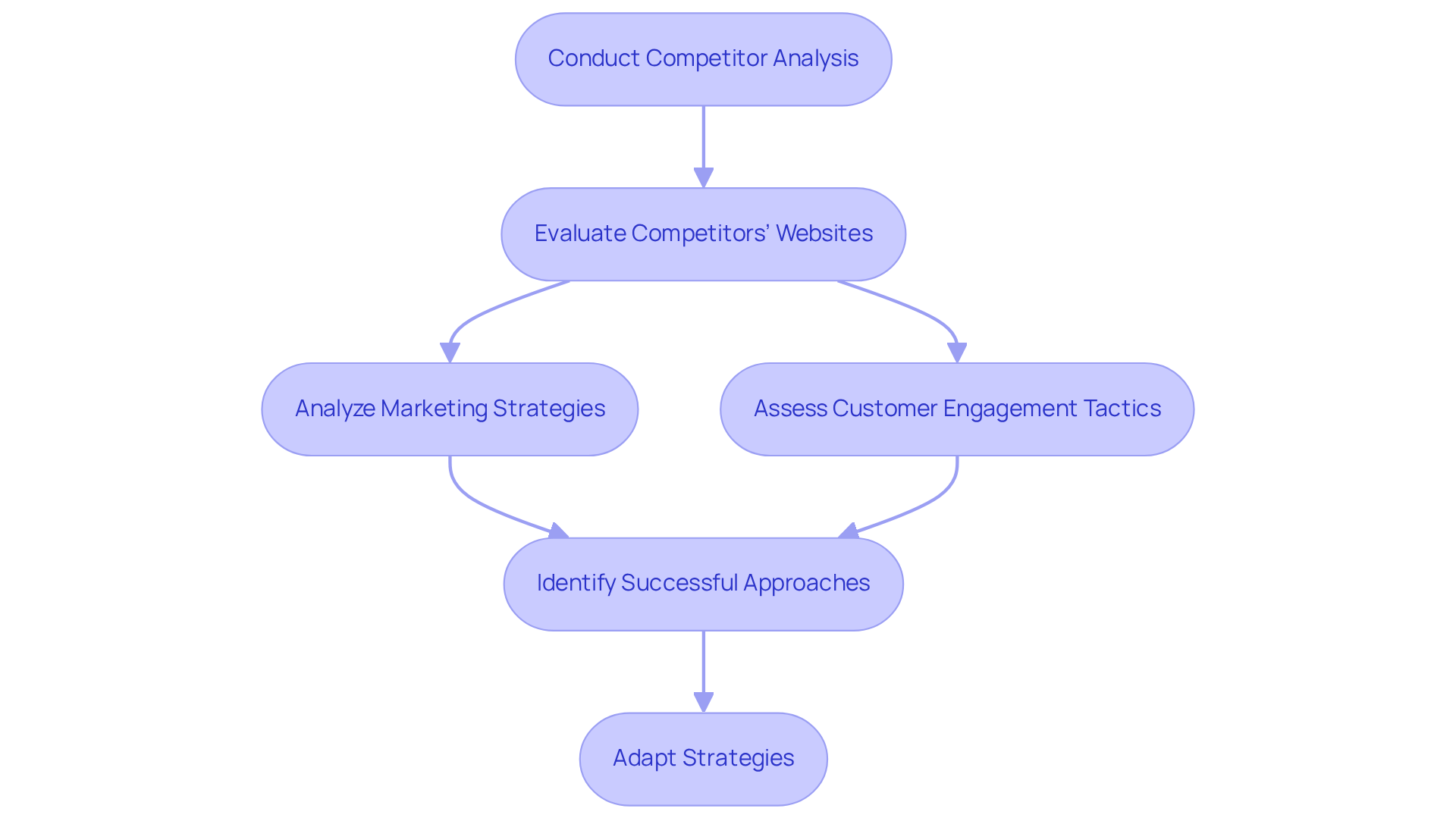
Conversion Copywriting: Craft Compelling Messages to Drive Sales
Conversion copywriting is essential for creating persuasive content that drives sales. It begins with a deep understanding of the target audience's pain points and desires, allowing for the crafting of messages that resonate effectively. To capture attention, effective copy must:
- Highlight benefits
- Create urgency
- Include clear calls to action
By incorporating psychological triggers and storytelling methods, companies can significantly enhance their messaging, leading to improved ecommerce conversion rate optimisation by converting more visitors into customers.
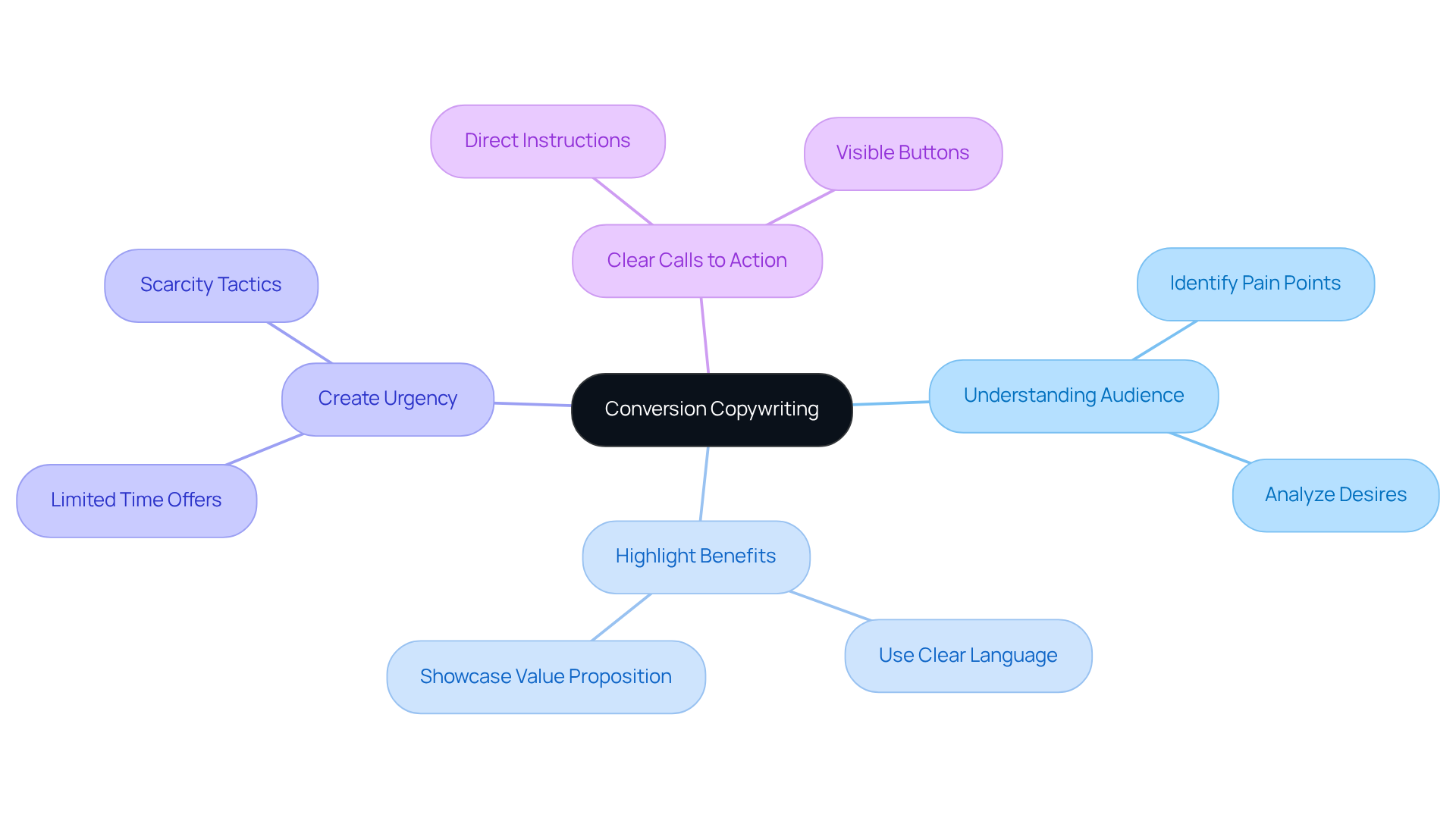
UI/UX Design: Enhance User Experience to Boost Conversions
UI/UX design is essential for creating an engaging and intuitive shopping experience that maximizes customer engagement. By focusing on user-centered design principles, brands can enhance navigation, streamline the purchasing process, and reduce barriers to sales.
Critical components of effective UI/UX include:
- Responsive design
- Clear visual hierarchies
- Accessible interfaces
Parah Group's holistic approach to ecommerce conversion rate optimisation underscores that investing in UI/UX enhancements not only fosters increased customer satisfaction and loyalty but also aligns with broader growth strategies that drive substantial profitability.
Ultimately, these improvements can result in , establishing UI/UX as a pivotal element of a successful e-commerce strategy.
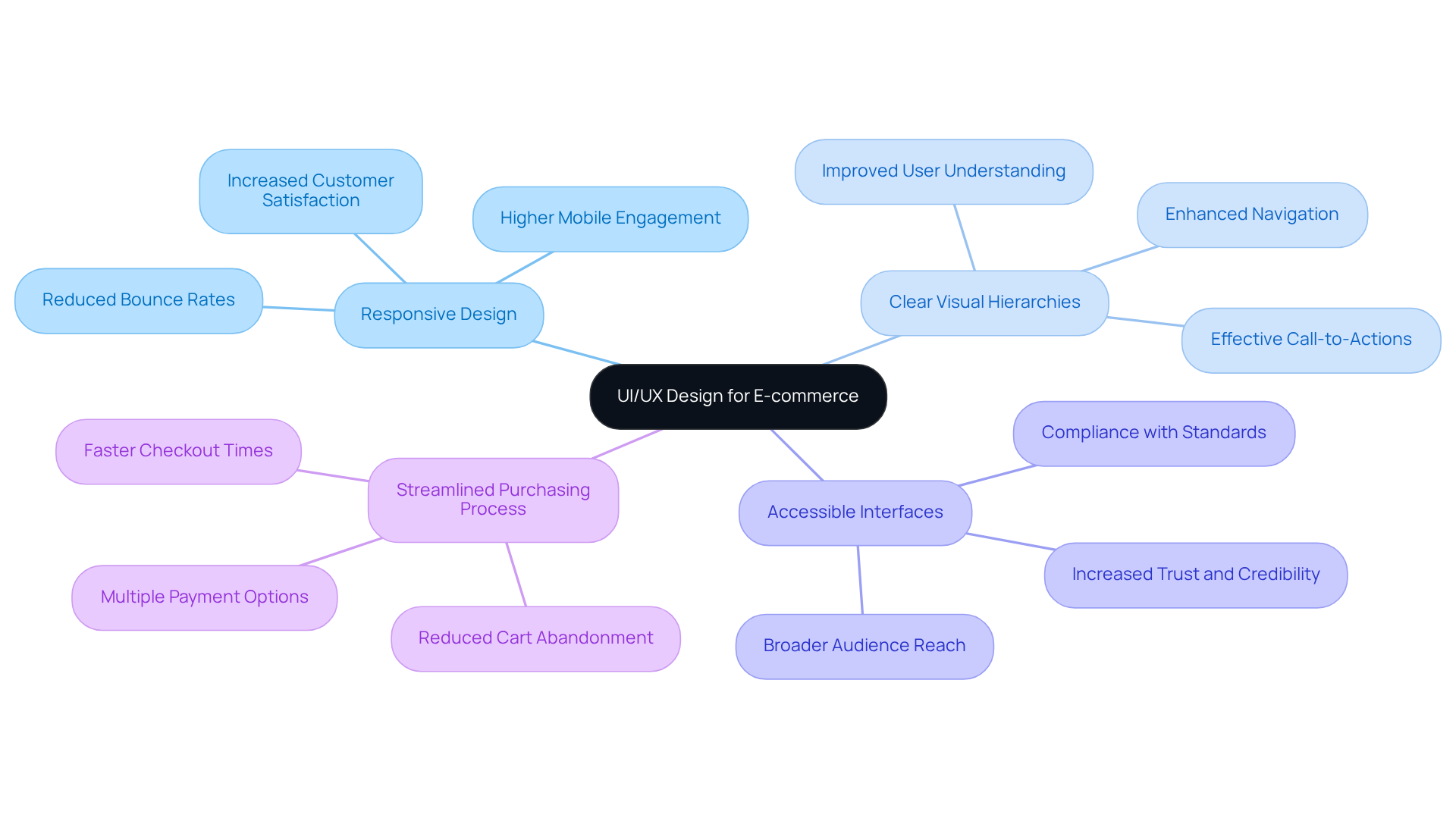
Customer Surveys: Gather Feedback to Inform Optimization
Customer surveys are an essential instrument for gathering feedback on user experiences and preferences. By posing targeted questions, brands can extract valuable insights that inform their optimization strategies. This feedback loop fosters , ensuring that both the website and marketing efforts meet client expectations.
Companies that proactively implement changes based on survey findings often witness significant enhancements in user satisfaction, contributing to ecommerce conversion rate optimisation. Indeed, studies reveal that 44% of online shoppers are likely to become repeat clients after enjoying a personalized shopping experience, highlighting the pivotal role of feedback in fostering loyalty and driving sales.
Moreover, organizations that prioritize the collection and response to client feedback can reduce cart abandonment rates, which currently stand at approximately 69%, by proactively addressing user concerns. By effectively leveraging customer insights, companies can enhance their ecommerce conversion rate optimisation to create a more engaging and responsive shopping environment, ultimately boosting their sales success.

Ongoing A/B Testing: Validate Changes with Real User Data
Ongoing [A/B testing](https://parahgroup.com) is indispensable for validating website changes and optimizing marketing strategies. By contrasting two iterations of a webpage or specific components, companies can ascertain which variant yields superior outcomes. This data-driven methodology empowers businesses to make informed decisions and continuously refine their approaches. Frequent A/B testing allows brands to remain agile and responsive to user preferences, significantly influencing success metrics. Businesses that engage in A/B testing can achieve engagement rate boosts of up to 400% through enhanced user experience design.
As Tim Ash aptly states, 'Conversion Rate Optimization (CRO) is the art and science of getting people to act once they arrive on your website.' This underscores the critical role of in enhancing outcomes and ensuring that marketing initiatives align with user behavior. A compelling illustration of this can be found in a case study from Parah Group, where an e-commerce company tested two variations of its checkout process, resulting in a 15% increase in conversions due to reduced friction. This example exemplifies how A/B testing can directly improve user experience and drive significant results, showcasing the transformative impact of comprehensive CRO strategies on profitability for DTC brands.
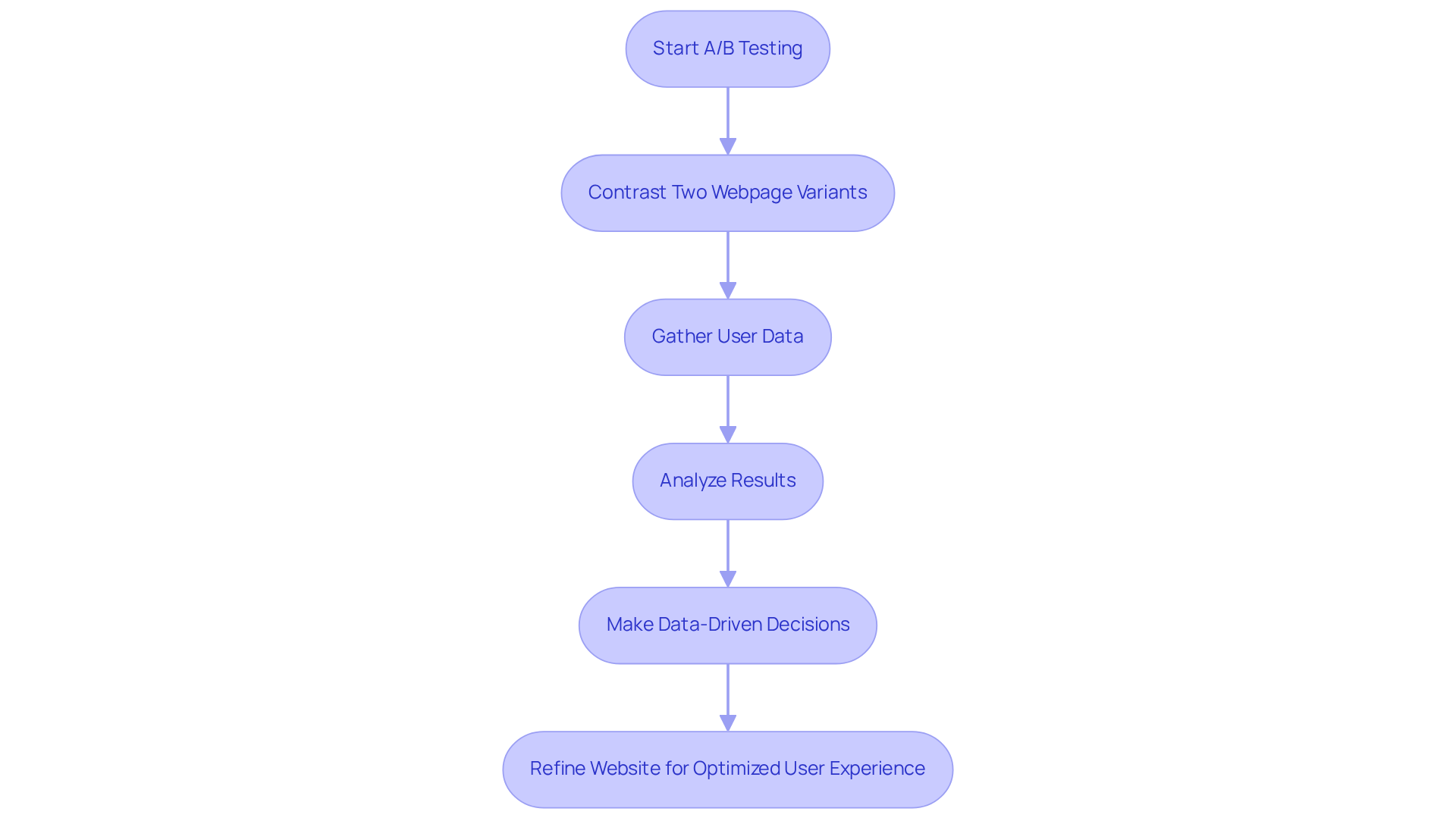
Streamlined Checkout Process: Reduce Cart Abandonment Rates
A streamlined checkout process is crucial for minimizing cart abandonment rates. By reducing the number of steps required to complete a purchase, offering guest checkout options, and providing a variety of payment methods, businesses can significantly improve their ecommerce conversion rate optimisation.
is essential for ecommerce conversion rate optimisation, as it reduces friction and motivates clients to finalize their transactions. Moreover, incorporating trust signals, such as security badges, significantly boosts customer confidence during the checkout process.
Brands that have effectively applied these strategies have observed notable improvements in transaction rates, clearly demonstrating the direct influence of ecommerce conversion rate optimisation on overall e-commerce success.
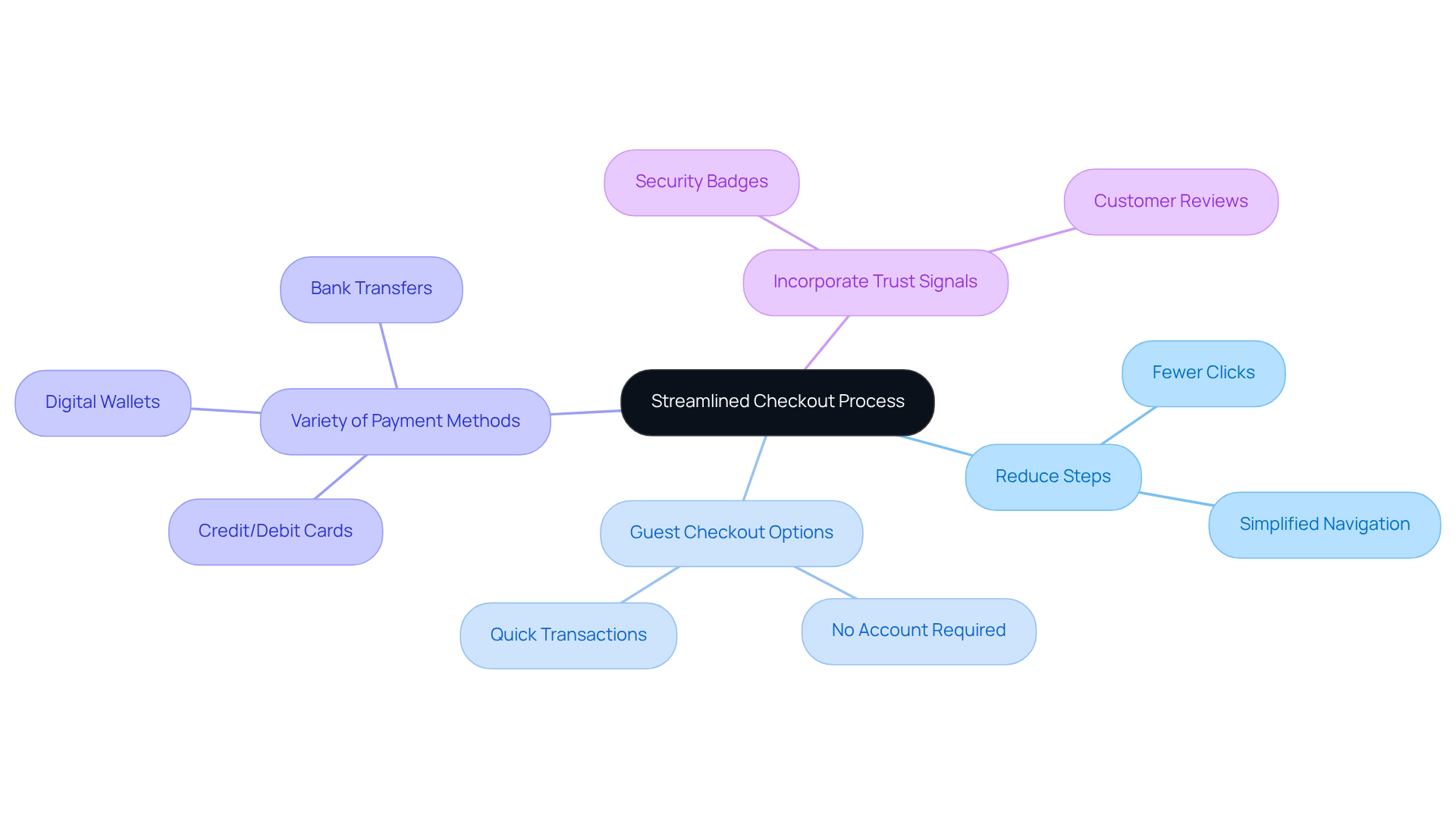
Mobile Optimization: Cater to the Growing Mobile Shopper
Mobile optimization is paramount for addressing the surge of shoppers utilizing mobile devices, which now constitute approximately 65% of e-commerce traffic. To effectively cater to mobile shoppers, companies must guarantee that their websites are on smaller screens.
Key strategies for ecommerce conversion rate optimisation encompass:
- Optimizing images for quicker loading times
- Simplifying forms to diminish friction during checkout
- Enhancing touch navigation to elevate user interaction
For instance, companies that adopt a mobile-first strategy can witness up to a 30% increase in engagement and transaction rates, as a seamless mobile experience encourages users to complete purchases. Furthermore, with 72.9% of all e-commerce sales anticipated to originate from mobile shopping by 2025, prioritizing mobile optimization is not merely advantageous but essential for seizing revenue opportunities. By delivering a smooth and effective shopping experience, brands can significantly bolster their ecommerce conversion rate optimisation and foster customer loyalty.
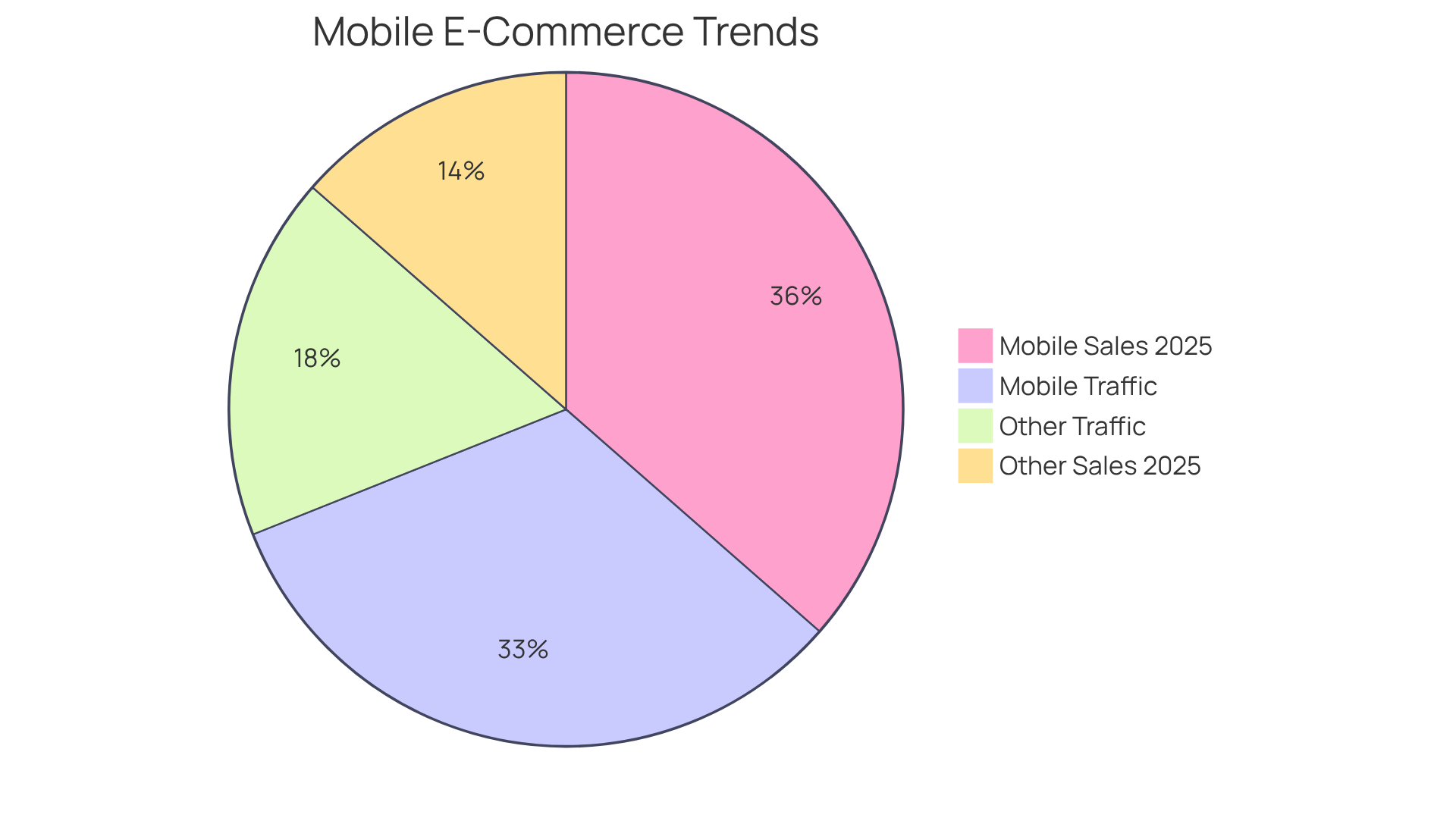
Website Performance: Optimize Speed and Security for Better Conversions
Enhancing website performance is crucial for ecommerce conversion rate optimisation to drive sales. Key components of ecommerce conversion rate optimisation include:
- Improving page load speed
- Ensuring mobile responsiveness
- Implementing robust security measures
Fast-loading pages play a crucial role in ecommerce conversion rate optimisation, as a one-second delay can decrease conversions by 7%, while pages that load in just one second can achieve conversion rates nearly five times higher than those loading in ten seconds. Furthermore, 79% of shoppers dissatisfied with site performance are less likely to return, underscoring the importance of speed in client retention.
In addition to speed, secure transactions are vital for building trust with clients. A seamless and secure shopping experience not only facilitates immediate transactions but also fosters long-term customer loyalty. For instance, a $30M apparel company collaborated with Parah Group to redesign their homepage, which included optimizing page load speed and minimizing unnecessary pop-ups. This strategy resulted in a 35% increase in engagement rates and a 10% rise in revenue per visitor. Similarly, Grab Green, a $15M cleaning product company, introduced a progress bar for free shipping thresholds and gamified the purchasing process, leading to an 80% increase in average order value (AOV).
By prioritizing website performance, companies can create an enjoyable shopping experience that boosts sales and enhances overall customer satisfaction. Notably, companies like Walmart have shown that for every one-second improvement in page load time, ecommerce conversion rate optimisation can lead to a 2% increase in conversion rates, demonstrating the tangible advantages of investing in speed and security enhancements. Parah Group's innovative strategies have proven effective in transforming direct-to-consumer brand profitability, making a compelling case for the necessity of .

Conclusion
Implementing effective ecommerce conversion rate optimisation strategies is essential for maximizing online sales and enhancing customer satisfaction. By adopting a holistic approach that incorporates various techniques, businesses can create a seamless shopping experience that not only attracts visitors but also converts them into loyal customers. This integrated methodology emphasizes the importance of aligning user experience, marketing messages, and data analytics to drive substantial growth without incurring additional advertising costs.
Throughout this article, key strategies have been highlighted, including:
- The use of user session recordings to analyze customer behavior
- Competitor analysis for benchmarking success
- Conversion copywriting to craft persuasive messages
- The significance of UI/UX design in enhancing user experiences
- Leveraging customer surveys
- Ongoing A/B testing
- A streamlined checkout process
- Mobile optimization
- Optimizing website performance
Each of these strategies plays a vital role in addressing specific challenges and opportunities within the ecommerce landscape.
Ultimately, the significance of these ecommerce conversion rate optimisation strategies cannot be overstated. As the digital marketplace continues to evolve, prioritizing these practices will not only foster immediate sales growth but also cultivate long-term customer loyalty. Businesses are encouraged to continuously assess and refine their approaches, utilizing the insights gained from data analytics and customer feedback to stay ahead in an increasingly competitive environment. By embracing these strategies, companies can unlock their full potential and achieve sustained success in the dynamic world of ecommerce.
Frequently Asked Questions
What is the holistic approach to ecommerce conversion rate optimization proposed by Parah Group?
Parah Group advocates for a holistic approach that integrates various strategies to enhance overall performance. This method synchronizes user experience, marketing messages, and data analytics to create a seamless journey for clients, allowing brands to uncover growth potential without additional advertising costs.
How do user session recordings contribute to ecommerce conversion rate optimization?
User session recordings are valuable for analyzing customer behavior, helping businesses identify obstacles that hinder transactions. By monitoring user engagements, companies can discover navigation challenges or product visibility issues, leading to targeted enhancements that improve user experience and transformation metrics.
Can you provide an example of how session recordings have improved conversion rates?
Yes, Costa Coffee utilized session recordings to pinpoint drop-off points during app registration, resulting in a significant 15% increase in registrations. This illustrates the effectiveness of session recordings in aligning website functionality with user needs.
Why is competitor analysis important for ecommerce conversion rate optimization?
Competitor analysis allows companies to benchmark their performance against industry leaders. By evaluating competitors' websites, marketing strategies, and customer engagement tactics, businesses can adopt effective strategies and avoid common pitfalls, ultimately improving their conversion rates.
What is an example of a successful outcome from competitor analysis?
A $30M clothing label worked with Parah Group to revamp its homepage, emphasize social proof, and enhance product pricing, leading to a remarkable 35% increase in sales performance. This demonstrates how targeted changes based on competitor analysis can significantly boost performance metrics.
How can companies effectively incorporate competitor analysis into their CRO strategy?
Companies can incorporate competitor analysis by consistently evaluating competitors' performance metrics and adapting successful tactics to fit their unique context. This helps refine conversion rate optimization efforts and ensures businesses remain competitive in the market.
FAQs











